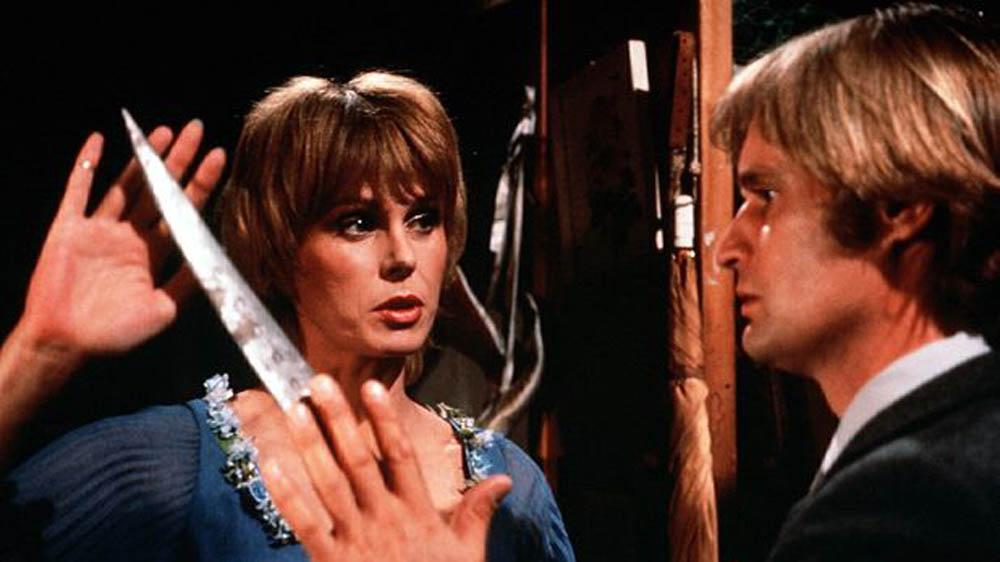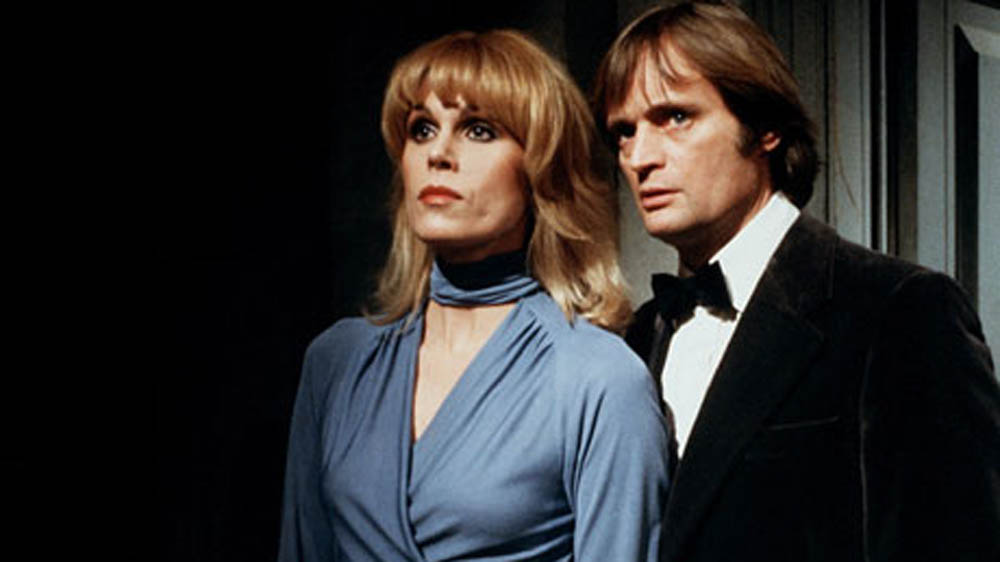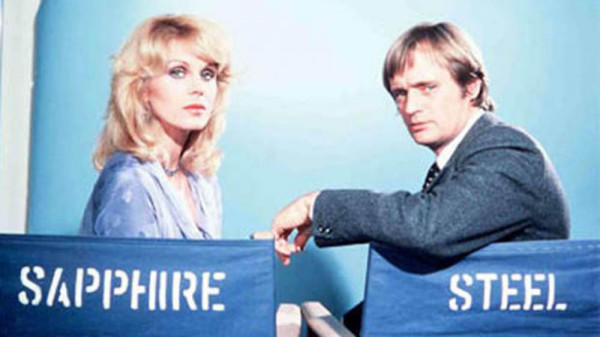“All irregularities will be handled by the forces controlling each dimension. Transuranic heavy elements may not be used where there is life. Medium atomic weights are available: Gold, Lead, Copper, Jet, Diamond, Radium, Sapphire, Silver and Steel. Sapphire and Steel have been assigned.”
In an exciting development reported last month, Luther creator and Doctor Who scribe Neil Cross, has revealed plans for a revival of the UK’s second greatest science-fiction series – Sapphire and Steel.
> Buy the complete original series boxset on Amazon.
Before the speculation over this reinvention begins, and for the benefit of those uninitiated, now seems the perfect time to reacquaint ourselves with this uniquely British slice of telefantasy…
Sapphire & Steel
As Tom Baker was clocking up his fifth year in the TARDIS, Sapphire and Steel appeared on British television for the first time. Airing on ITV in the summer of 1979, the show followed the classic Doctor Who format of 25 minute cliff-hanger episodes. Comprising of stories up to 6 or 8 episodes in length, the tales were never actually given on-screen titles and remain known simply as Assignment 1 and so on.
Starring David McCallum and Joanna Lumley as the titular Sapphire and Steel, the series depicts the adventures of two inter-dimensional operatives serving an unknown otherworldly authority. Possessing extraordinary abilities, the pair are tasked with preserving the order of time, but exactly who or what drives them is never truly explained.
One of the charms of the series is its ambiguous nature, implying rather than explaining, we know Sapphire and Steel are two elements and capable of taking human form, but very little further information is disclosed. Yet despite the vagueness, the pair’s eerie adventures were extremely popular, and are fondly remembered in the UK – like another perennial UK TV favourite, the possibilities are endless.
Coming to a close in 1982 after four successful seasons – mainly due to its much in demand stars becoming increasingly unavailable – quite why ITV allowed the show to fade away is a mystery. Surely with a writer as imaginative as Peter J. Hammond at the helm, the series could have easily explained away a change of lead actors. Alas not, but now with the involvement of Neil Cross, perhaps the show’s true potential can finally be realised.

It’s extremely difficult to sum up Sapphire and Steel; it simply needs to be experienced rather than explained. Like Doctor Who, the show was originally envisioned as a children’s drama – which is particularly evident in the first instalments – although it soon embraced more adult themes.
If you thrill to the darkness that envelops Harry Potter, or at times modern Doctor Who, then you’re sure to find plenty to enjoy here. With his performance as Steel, David McCallum gives the best audition you’ll ever see for the role of the Doctor and the duo are at times reminiscent, though perhaps even more aloof , than the Time Lord and his companion.
While Sapphire is the more approachable, Steel has a very 12th Doctor approach to proceedings and manages to save the day in his own calculating way. Joanna Lumley brings a reassuring edge to Sapphire, yet remains more otherworldly than say your regular Doctor Who companion.
Having seen very little of the show since its original broadcast, I recently sat down to revisit the duo‘s opening adventure and while it may meander in places – it is still highly inventive.

The story begins relatively simply – as we are introduced to Sapphire and Steel – through the eyes of two children whose parents vanish from their home one evening. The children’s distrust of the pair mirrors our own, as we are initially suspicious of the mysterious operatives and their motives.
Gradually, and this is portrayed quite naturally, the children do warm to the unearthly visitors as their intentions to retrieve the missing parents become clear. While the suburban setting, imagery and sounds may seem clichéd; broken clocks, nursery rhymes, ghostly soldiers – it is all played out with complete conviction. Chock full of suspense, a compelling science-fiction thriller and genuinely unnerving – the series took viewers completely by surprise.
The cliffhanger to Episode 4 is wonderful, as Sapphire and the young Helen pursue a page from a particular dangerous nursery rhyme, while a raging storm propels it through the house. Another quite daring sequence occurs in Episode 3, where Sapphire has become imprisoned within a painting inside the home. As ghostly soldiers close in on her, it becomes crystal clear how they intend to use a rope dangling just nearby.
The final episode sees Steel use the children as bait in a last ditch attempt to capture the invaders, and when all is said and done, our heroes depart as quickly as they arrived. It’s an intriguing, solid start and, although far from the series best, the potential for adventure is clearly evident.
Sapphire and Steel truly were wanderers in the fourth dimension. If you’re a recent convert to Doctor Who and enjoy the classic era, this series will certainly provide a similar fix. With a little retooling, the series could certainly hold its own in the current genre TV landscape.
I look forward to the planned reboot and its endless possibilities with fevered anticipation…

